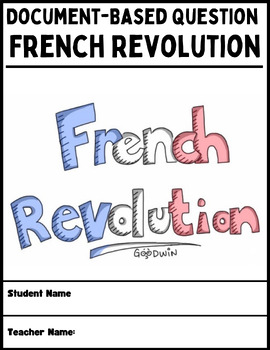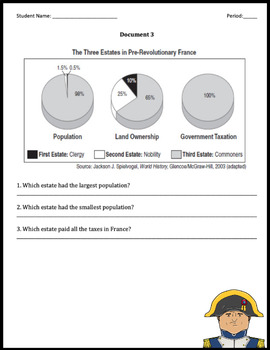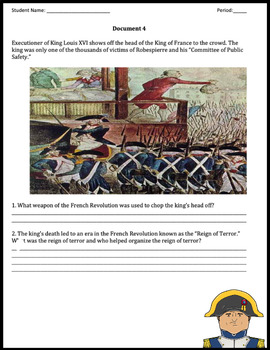French Revolution: Document-Based Question (DBQ)
Will Pulgarin
1.9k Followers
Grade Levels
7th - 10th
Resource Type
Standards
CCSSRH.9-10.1
CCSSRH.9-10.2
CCSSWHST.9-10.4
CCSSWHST.9-10.9
Formats Included
- Zip
Pages
6 pages
Will Pulgarin
1.9k Followers
What educators are saying
This was a great way to introduce the French Revolution to my students. The documents are easy to understand and the questions help. Writing is way easier wham they know what to write about. Thanks for the hard work!
This helped my students so much. I wanted the students to write about the French Revolution and this was perfected. The sources were easy to understand especially for my lower students. Thanks
Description
DBQs are an excellent way to hit most of the Common Core standards in your class. If there is one activity that encapsulates the requirements of the Common Core - the DBQ is it!
Prompt: What were two major causes and two major effects of the French Revolution?
Here is a list of the documents:
1. John Locke, Two Treaties of Government, 1689
2. This excerpt is adapted from Travels in France by Arthur Young
3. Three Estates Chart, 2003
4. Executioner of King Louis XVI (Picture)
5. Napoleon Bonaparte (Picture)
6. Excerpt from World History: Patterns of Interaction
*** This product comes with a DBQ Essay Organizer and Essay Rubric ***
Total Pages
6 pages
Answer Key
N/A
Teaching Duration
2 days
Report this resource to TPT
Reported resources will be reviewed by our team. Report this resource to let us know if this resource violates TPT’s content guidelines.
Standards
to see state-specific standards (only available in the US).
CCSSRH.9-10.1
Cite specific textual evidence to support analysis of primary and secondary sources, attending to such features as the date and origin of the information.
CCSSRH.9-10.2
Determine the central ideas or information of a primary or secondary source; provide an accurate summary of how key events or ideas develop over the course of the text.
CCSSWHST.9-10.4
Produce clear and coherent writing in which the development, organization, and style are appropriate to task, purpose, and audience.
CCSSWHST.9-10.9
Draw evidence from informational texts to support analysis, reflection, and research.





